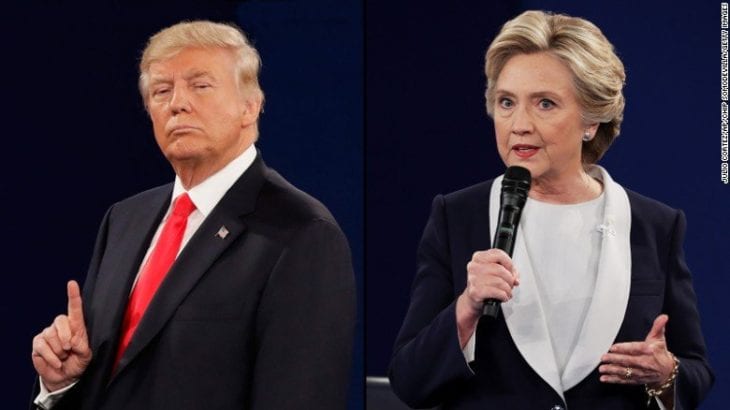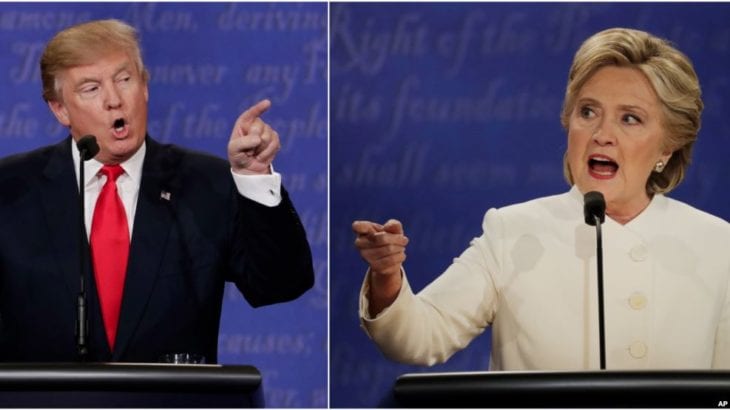As Election Day nears, almost 40 percent of Americans have already cast their ballots by mail, and right now, Five Thirty Eight predicts there is only a 0.5 percent chance of a tie in the electoral college between Republican nominee Donald Trump and Democratic nominee Hillary Clinton. But considering how the commanding lead Clinton held over Trump in terms of projected electoral college votes has shrunk substantially over the past few days, it’s worth considering what happens should Clinton and Trump tie in the general election.
Sure, Clinton held a particularly commanding lead beginning early in October, after leaked tapes featuring Trump proudly declaring he could “grab [women] by the pussy” and “do anything” to them surfaced and a slew of sexual assault allegations against Trump soon followed. Projections by The New York Times and Five Thirty Eight, taking into account a wide range of factors, concluded Clinton had a roughly 92 percent chance at winning the presidency.

Source: FOX2now.com
But following FBI Director James Comey’s sensationalized announcement that Clinton’s emails would be investigated in connection with the FBI’s investigation of Anthony Weiner’s alleged sexting relationship with a minor, The New York Times’ prediction of Clinton’s chances of winning dropped to 84 percent as of Friday, where Five Thirty Eight has dramatically lowered its prediction to 65 percent. On a national level, various polls this week saw the two candidates very close, although it’s worth noting that national polls don’t speak very accurately to the outcome of the election, within our electoral college system.
Obviously, these numbers indicate we’re not in real danger of seeing a tie, just days away from Nov. 8, but you can never be too informed, nor too confident some explosive change or radical discovery isn’t just around the corner, so let’s examine the possibilities.

Source: Getty Images
A tie among electoral college votes would become possible if, in some states, neither candidate is able to win a majority of votes due to third party contenders, such as the Green Party’s Jill Stein or the Libertarian Party’s Gary Johnson, seizing a sizable amount of votes. If this were to happen in enough states, unlikely as this may be, things would be taken to the House of Representatives. This happened in 1800, when the House chose Thomas Jefferson over Aaron Burr, and in 1824, when it chose John Quincy Adams over Andrew Jackson.
But, as per the 12th amendment, “if the House of Representatives shall not choose a President,” then “before the fourth day of March next following, then the Vice-President shall act as President, as in case of the death or other constitutional disability of the President.” Since the 12th amendment was written, the fourth day of March has been changed to Jan. 20, and the “Vice-President” to the vice president-elect, who would be chosen by the senate.
So, if Clinton and Trump were to tie in both the Electoral College and then in the House of Representatives, it would fall on the U.S. Senate to then choose between vice presidential nominees Tim Kaine and Mike Pence. Having a Republican-controlled House and Senate would really pose a problem for the Clinton-Kaine camp, in this scenario.
Original by Kylie Cheung
